Sempre in Giro – Having the Best of Two Worlds
They come for the pasta but stay for the grannies. That’s what Pasta Grannies founder, Vicky Bennison says about her YouTube channel and social media accounts that together, have more than 2.5 million followers! We talked to Vicky about how the idea of Pasta Grannies was conceived, why she bought a home in Italy, and her new book.
Vicky considers herself to be food anthropologist and the team are beautifully preserving the stories of strong Italian women who have lived through poverty and world wars. However, these grannies always found a way to provide delicious and nutritious family meals. The concept of ‘from scratch’ and made by hand was a necessity and not a novelty. They used ingredients based on availability and affordability. These grannies see ‘choice’ as a privilege that we probably take for granted.
Today, even with modern conveniences and some nonne well into their 80’s or 90’s, they still make pasta from scratch. Will there be a new generation of pasta grannies? Probably not. However, through the power of our digital world, they will be in our hearts forever!
We hope you enjoy reading and watching this month’s “Chat with an Expat”.
(1:28) Where were you born and raised?
I was born in Kenya and my childhood was spent in Botswana, southern Africa. I had an expat lifestyle. I’ve never really felt that the UK was home. I’m one of those dislocated people. That is how I formed how I approach food because it’s a way of getting to know culture and thinking about home.
I had a wonderful childhood with a lot of physical freedom.
(2:45) How did you get to London?
My connection to Italy goes back a long way. In fact, when my parents came home from Africa in those days, it was by boat. The boat used to dock in Venice. Italians taught me how to walk. Venice was always an adventure even when I went there when I was older. You’d eat spaghetti or a rice dish. I always loved Italy consequently.
I had a flat in London for many years and wanted a large kitchen. The only way that I could afford it was by moving out of London. If you’re going to move from London, it’s better to go somewhere where there’s better weather and culture, and so I chose Marche. My parents have a home in Greece, so Ancona (Marche) is a stopping point on the way to Greece. For this reason, I chose Marche.
(4:25) Do you have a farmhouse?
Yes, but it’s actually an old schoolhouse. To make my kitchen I knocked down three classrooms to make one! Right now, Today, I’m speaking from our home in London.
It’s a long story, but my husband re-met me (we first dated when I was 16). I moved to Italy and he had this flat in London. We’ve never figured out where we’ll be, but I’m an Italian resident and he isn’t.
(5:07) How did you become and Italian resident?
I am not a citizen, but a resident. Citizenship is much harder. Residency is how I bought the house in the first place. You buy and move and pre-Brexit, it was easier to establish myself. I filled out the forms and have stayed the required amount of time.
(5:48) You’re happy in both places.
Absolutely. It’s 90 of every 180 days that I can be here.
(6:20) What was your career path prior to Pasta Grannies?
I’m 63 so I’ve had several jobs before discovering food. I worked as a management consultant specializing in international development. I had lots of stints abroad like two years in South Africa after the end of apartheid, plus in Siberia, Kazakhstan, and all kinds of strange places.
When I met my husband, I started to move more to public sector, charitable work and consulted for NGOs like UNICEF. It was slightly easier to combine that with a personal and family life. When I met Billy, I pretty much gave up the previous career to stay in one place. It was an active choice and I was fine with it.
I had always written about food. I eventually started writing full time in about 2007. It eventually developed into YouTube because I was researching Italian food once living there. I noticed that it was only older women who were still making pasta by hand daily. I thought to make a record of it originally about the diversity of pasta shapes. The physicality of pasta making was such that even taking photos isn’t enough because you need to capture the rhythm of it. So, I picked up a camera. If you look at the very early Pasta Grannies videos, you can see that there is only one camera, and I didn’t really know what I was doing!
The videos have definitely evolved over the years and now, thanks to the success of the book, I now have a team.
That’s good because the photography is now better.
(10:14) About Billy (Vicky’s husband) and family
Billy is a Scot. He has two children, Megan and Charlie. Megan now has Raf who is our grandson. He is four and a half.
We tend to stay here for the holidays (rather than Italy) and he’s only twenty minutes away by train. He has been to Italy but doesn’t go back and forth like I do.
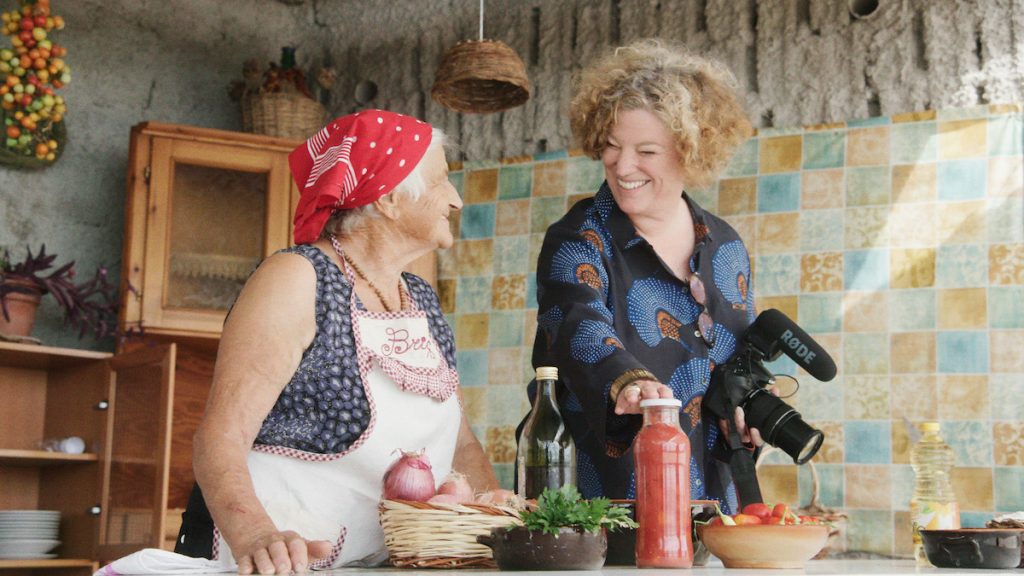
(11:40) Do you speak Italian?
Yes. The downside is that I’m going back and forth, so my Italian bumps along the bottom. I study it and have a weekly lesson with Nick who I met in during my travels in Sardinia. His Dad is one of the mayors who helped organize some of the ladies that we filmed there. When I first arrived in Italy, I quickly discovered that some of the language courses equip you for immigration. They don’t prepare you to deal with things like reconnecting electricity and that kind of thing. You’re basically thrown into the deep end and have to communicate somehow. Generally, Italians are lovely about helping and speed you along. You learn the basics and certain structures, and that helps you get through quite rapidly.
I’m always trying to learn but am conscious about speaking it in public because I’m so slow. I like to think about the right structure or gender, but then the conversation has moved on.
(13:31) What about dialects?
I know when I don’t understand a thing that they are speaking a dialect. Usually at that point we get the families involved. Olive, my ‘granny finder’ and Andrea the cameraman are Italian. Most people these days do speak Italian, although they might be more comfortable with the dialect. We invite them to speak in dialect so that they are more comfortable when we are filming. Then we get the families to translate those bits.
(14:45) What year did you start the channel?
In 2015. I didn’t begin thinking, “today I’m going to start a YouTube channel.” YouTube was fairly new and a place to park videos that I had made. At this time, I wasn’t making videos every week, but more like once or twice a month. Then, the algorithm sucks you in and you have to be regular about it and it eventually took over my whole life!
(15:48) 2.5 Million Followers
I never anticipated that the three main platforms (YouTube, Instagram, and Facebook) would have 2.5 million followers
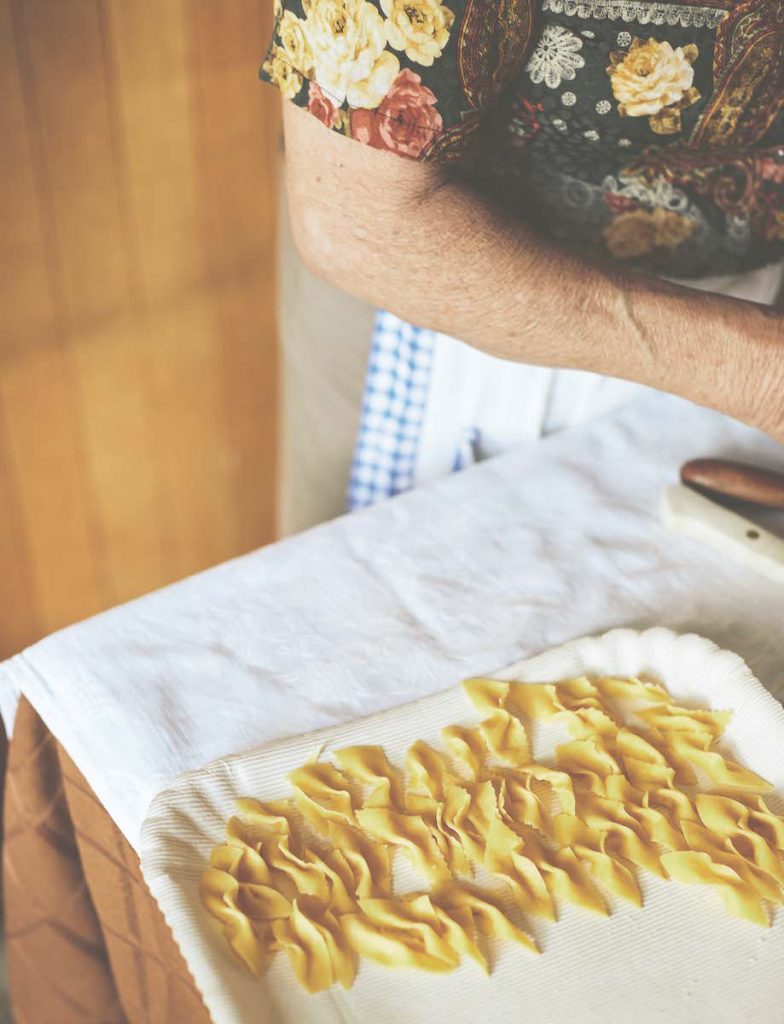
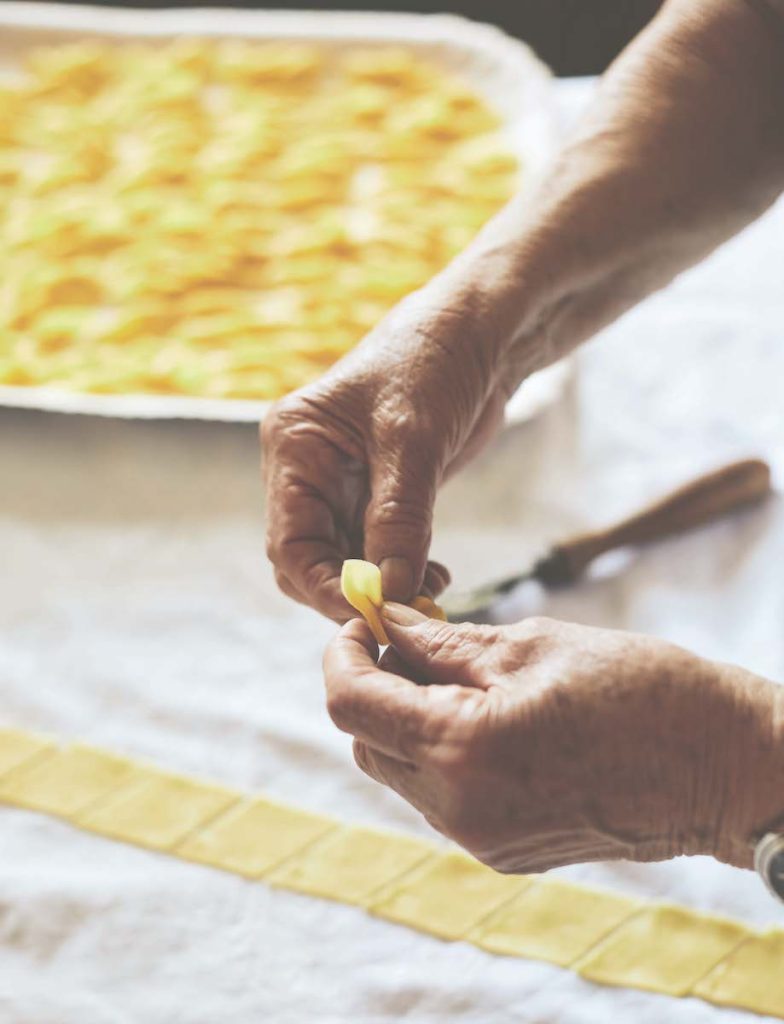

(16:41) How did you continue to grow your niche audience since the foodie social media craze took off?
It is a niche. If you told someone that I planned on having a successful YouTube channel filming old lady, they would laugh at me. It has evolved and I say, “people come for the pasta, but stay for the grannies”. It’s windows into that life and generation. I think it’s typical of that generation anywhere, but they are hugely welcoming — hospitality is innate. That is something very comforting to viewers.
In the beginning, I was followed by chefs because it was about the pasta making. However, now it’s about the stories of the women. Not all our ladies want to talk about themselves and that’s absolutely fine. We are not there to interrogate them.
(19:01) How do viewers react to women who are well into their 80’s and 90’s, and can roll dough etc.?
Through the pandemic, viewer figures went through the roof. People weren’t just watching but wrote to me. I received many touching messages like how watching the channel helped them cope with the stresses that they were going through. I think that’s in part, because of all the hard times that these grannies went through. It’s also a soothing ASMR (autonomous sensory meridian response). The rhythm of watching pasta being made is comforting.
(20:33) What is the approximate real time of making one segment that is about 15 minutes?
We pay for their ingredients and that’s important especially if it involves, for example, meat. For a ragu let’s say, we ask them to prepare it ahead of time. We film two people a day. We spend between two to three hours with each lady.
We were recently in Abruzzo, so we’ll travel around a particular area and then record two ladies a day. We try and get b-roll and photos of the surroundings. We stay as long as it takes to make the recipe and usually, we are invited to eat.
They are wonderful women. They make the food for us – not for YouTube or the audience. They want to feed the people who come through their door. We sit down to eat several times a day.
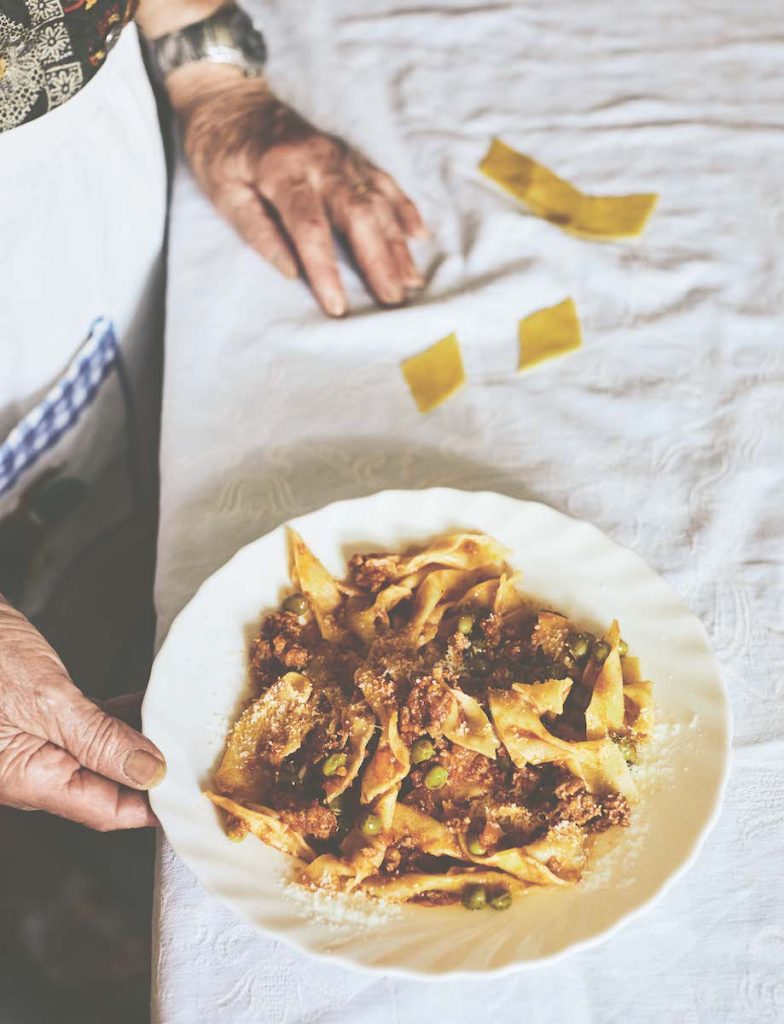
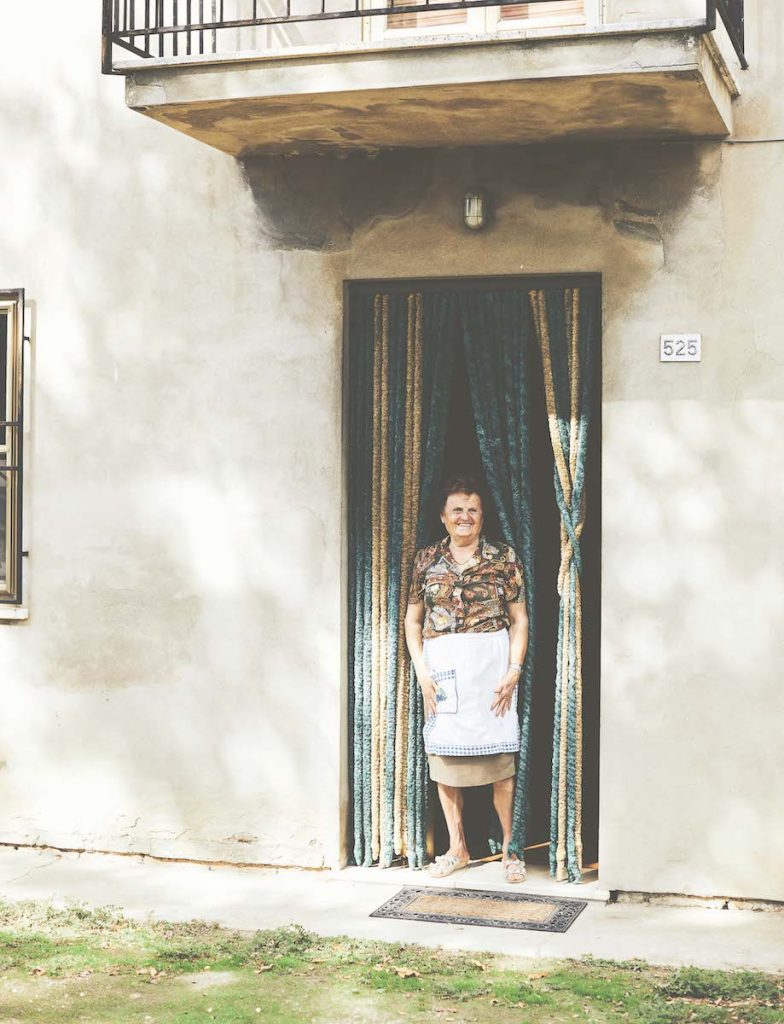
(22:25) How do you find the grannies?
I have a ‘Granny Finder’. Here name is Livia De Giovanna and she lives in Faenza. I think we’ve worked together for the last six years. For example, if we think we’re going to Mantua and there’s a ravioli that we want to film, she will contact various organizations in the area and see if they can recommend anyone. We never approach grannies on their own. It’s always through their families.
Sometimes the women say no. We keep asking people until one of them says yes. Lots do, thank goodness! Usually, a granddaughter or a niece is in the background who is close by, either on or off camera. It’s a family affair.
(24:51) What has been the reaction of you making these videos as a foreigner?
Most of the women view it in personal terms. They are delighted to be invited, interviewed, and share their recipe, but are a bit hazy about YouTube.
As for me, there are some Italians who wonder why. Pasta Grannies is reported differently in Italy than outside. There’s always an element of incredulity of why we’d want to film their grandmothers. Then, there’s the view of me as a foreigner. I always say that Italians are so passionate about their local food cultures that they don’t see the bigger picture. For example, if you speak to someone in Liguria, they are not very interested in what happens in Calabria.
You’ll get hugely knowledgeable people throughout Italy about the gastronomies, but someone who takes a helicopter view is more often an outsider.
(27:11) Do you think that you will inspire younger Italians to make pasta from scratch?
In Italy you have pasta shops and you can buy exceptional fresh pasta there. What’s changing is that people have choice. The generation that I film did not have a choice, so in order to eat pasta, you had to make it. You needed the disposable income to buy dried pasta. It was middle class aspiration to eat dried pasta. That’s what has changed from the Second World War. So, there is a generation that has gone out to work and wanted to leave the experience of their grandmothers behind.
Of course, now more men are getting involved with it. There’s a pasta making school in Faenza for local people. It’s boys who come along because they want to impress the girls with their pasta making skills! I think that people who want to get into pasta making are professionals who want to set up a shop or work at a restaurant.
It has ceased to be a domestic tradition.
(30:15)
It’s very easy to make pasta and become quite competent, but the Zen master level does take years of practice. I think you’ll see fewer people who can do that. And, certainly not in the home.
(31:42) Cucina Rustica
A lot of the things we film are for celebrations or Sundays. The assumption that pasta was there every day is erroneous. If you could grow your own wheat, then you would have had your own flour.
(32:33) Do you make pasta?
I do. Not very often because when one is a producer, writer, and everything else, I don’t have much time to make it. Just like the daughters or granddaughters of the women we film. I think that it’s very therapeutic and I prefer to use the rolling pin (mattarello) rather than a machine. I think that rolling the dough out is very straight forward, but it’s a soothing thing to do. It gives me pleasure. Don’t worry about the ‘sfoglia’ (pasta sheets). You can have fun making spaghetti or cavatelli. Pasta is fun!
(33:45) Pasta Grannies Book
If you’re not going to make pasta very often, just get yourself a thick plywood. Make sure you get a carpenter to put a lip on it and fits your kitchen table or counter.
The wood that the grannies used are like heritage items and are sometimes chestnut, beech, poplar, or cherry wood.
My advice is don’t let the fear of sfoglia stop you from making pasta. Find a shape that you enjoy.
(37:07) Going Viral
Book one was in response to the channel going viral. It became hugely popular in about a month. I thought there was something wrong with my YouTube channel because the figures were going up so fast.
That meant there was demand for it and our audience wanted the details written down.
What we did with the second book was add more recipes and provide a broader range including risotto, pizza, and those sorts of things. This time we have QR codes so if you’re looking at the book and want to go back to the video.
There are one or two more demanding things, but most recipes are chosen from the popular videos.
(40:00) Do you have a photographer onsite when shooting?
No. Lizzie Mayson is the photographer for book 2. We shot the food photography in Italy and then we gave her a grand tour of grandmothers and tried to get as many photographed as possible.
(40:10) How long did it take you to write the book?
I’d say three months. I make notes as I’m filming.
(41:32) Do you think there will be a part 3?
Yes, but I’m still recovering from part 2! There’s a great deal of pleasure from it. I have to negotiate with my husband because Pasta Grannies is full time job and then there’s writing a book on top of it.
The most important thing for me is to give a voice to these women and tell their stories. I’d say that I’m a food anthropologist. To me, it’s not the recipes, but the privilege of sharing their stories.
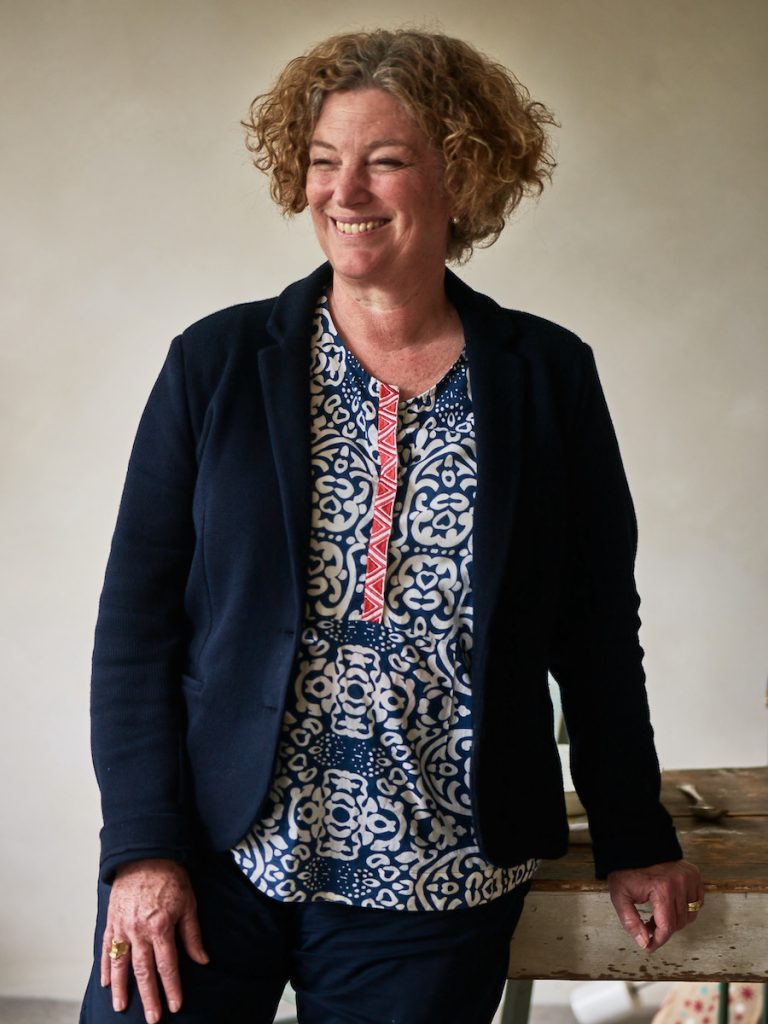
(43:50) Chat with an Expat: Do you consider yourself an expat?
I do not consider myself an expat, but more a migrant.
(44:56) Sempre in Giro
I say that I’m “sempre in giro” (always coming and going) and have the best of both worlds. I am never away from either to miss anything. I have the perfect life!
With grandchildren, I don’t think that I’ll ever be full-time in Italy. However, once my husband retires, we’ll try to spend as much time in Italy as possible.
I moved to Italy, so that’s really where I’d like to be, but you’re tied to family more than a place. At the moment we have the perfect balance, so long may that live!
(46:59) Where do you see the channel in the next decade?
I’m 63, so I suppose that I can continue making videos in the next ten years. I’m always amazed how much the channel continues to grow, so we have an idea to film Greek ‘yiayia’ or more Italian grandmothers from around the world like the U.S., Australia, and Canada. That would be fun. I’m sure it will happen.
I’d also like to do a documentary series and set up a foundation. I think ten years can do it.
I am very conscious of the privilege that I have, and I’m still consumed by it. There’s nothing about what I do that I find tedious. It’s always an adventure, privilege, and joy to meet these wonderful women. I am very blessed!
Photo Credits:
Food photos are by Lizzie Mayson and photos of Vicky are by Emma Lee.



Good Morning Vicky,
I’ve just read Pasta Grannies (book 1) from cover to cover. What an absolutely fabulous book and and the recipes sound amazing. I loved the little insert introducing the Grannies. Such likeable, wonderful women. I once had an Italian boyfriend and when I first met his mother ( she was at the table making pasta!) she cried throughout the whole process. When I asked Silverio why she was crying, he said.’ Oh it’s because you’re not Italian!’ I wonder, if I had married him, would I now be a pasta granny. Hopefully she would have gotten over my un-Italian-ness, and shared her family recipes with me. My husband and I spent a month in Italy for our 40th anniversary in 2015, and we happily ate pasta every single day. I know that this book will expand my pasta horizons and I‘ll be making some delicious dishes. One thing that surprised me however, was that there wasn’t a recipe for spaghetti carbonara, my husband’s favourite pasta dish.
I’ll start hunting for some 00 flour and begin my pasta journey.
Thanks so much for finding the grannies and putting them in this great cookbook.
Thank you Judy for reading the interview with Vicky. The YouTube version will be posted on Sunday, Feb 12. We hope that you get to try some of the recipes. Thanks for sharing your story and we’re so glad to know that you love visiting Italy. You can find 00 flour at any Italian shop. Let us know if you get to Italy again!